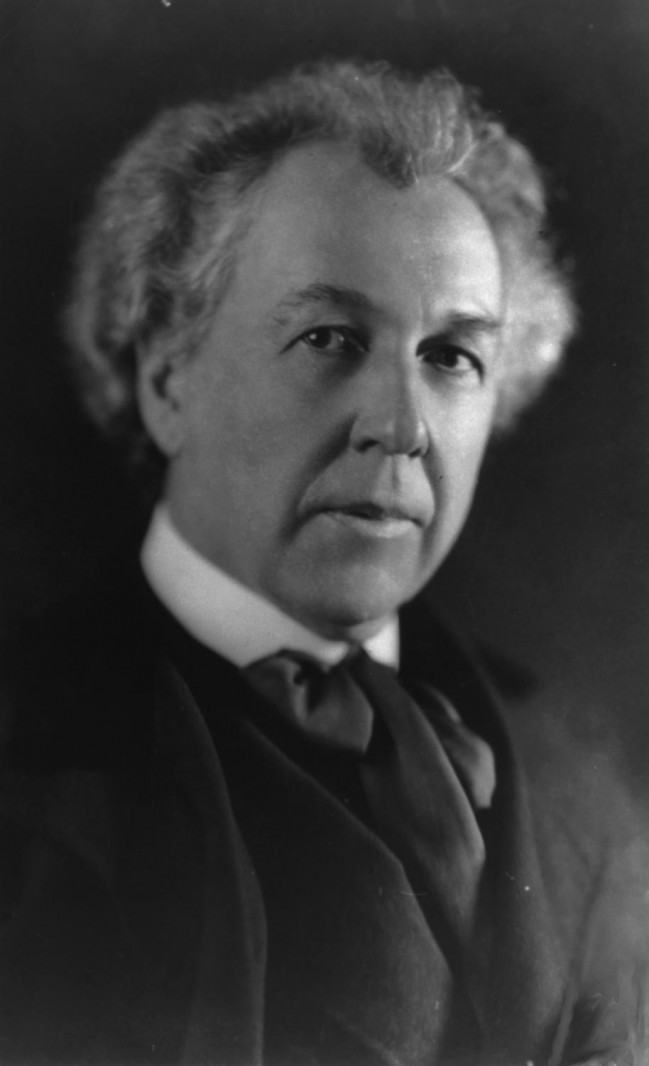Fear of missing out (FOMO) and other negative feelings are greatly disproportional to good ones in online social networks. The phenomenon is widespread and well-documented. Compound this with the observation — though unintuitive — that your online friends will have more friends and be more successful than you, and you have a recipe for a growing, deep-seated inferiority complex. Add to this other behavioral characteristics that are peculiar or exaggerated in online social networks and you have a more fundamental recipe — one that threatens the very fabric of the network itself. Just consider how online trolling, status lurking, persona-curation, passive monitoring, stalking and deferred (dis-)liking are re-fashioning our behaviors and the networks themselves.
From ars technica:
I found out my new college e-mail address in 2005 from a letter in the mail. Right after opening the envelope, I went straight to the computer. I was part of a LiveJournal group made of incoming students, and we had all been eagerly awaiting our college e-mail addresses, which had a use above and beyond corresponding with professors or student housing: back then, they were required tokens for entry to the fabled thefacebook.com.
That was nine years ago, and Facebook has now been in existence for 10. But even in those early days, Facebook’s cultural impact can’t be overstated. A search for “Facebook” on Google Scholar alone now produces 1.2 million results from 2006 on; “Physics” only returns 456,000.
But in terms of presence, Facebook is flopping around a bit now. The ever-important “teens” despise it, and it’s not the runaway success, happy addiction, or awe-inspiring source of information it once was. We’ve curated our identities so hard and had enough experiences with unforeseen online conflict that Facebook can now feel more isolating than absorbing. But what we are dissatisfied with is what Facebook has been, not what it is becoming.
Even if the grand sociological experiment that was Facebook is now running a little dry, the company knows this—which is why it’s transforming Facebook into a completely different entity. And the cause of all this built-up disarray that’s pushing change? It’s us. To prove it, let’s consider the social constructs and weirdnesses Facebook gave rise to, how they ultimately undermined the site, and how these ideas are shaping Facebook into the company it is now and will become.
Cue that Randy Newman song
Facebook arrived late to the concept of online friending, long after researchers started wondering about the structure of these social networks. What Facebook did for friending, especially reciprocal friending, was write it so large that it became a common concern. How many friends you had, who did and did not friend you back, and who should friend each other first all became things that normal people worried about.
Once Facebook opened beyond colleges, it became such a one-to-one representation of an actual social network that scientists started to study it. They applied social theories like those of weak ties or identity creation to see how they played out sans, or in supplement to, face-to-face interactions.
In a 2007 study, when Facebook was still largely campus-bound, a group of researchers said that Facebook “appears to play an important role in the process by which students form and maintain social capital.” They were using it to keep in touch with old friends and “to maintain or intensify relationships characterized by some form of offline connection.”
This sounds mundane now, since Facebook is so integrated into much of our lives. Seeing former roommates or childhood friends posting updates to Facebook feels as commonplace as literally seeing them nearly every day back when we were still roommates at 20 or friends at eight.
But the ability to keep tabs on someone without having to be proactive about it—no writing an e-mail, making a phone call, etc.—became the unique selling factor of Facebook. Per the 2007 study above, Facebook became a rich opportunity for “convert[ing] latent ties into weak ties,” connections that are valuable because they are with people who are sufficiently distant socially to bring in new information and opportunities.
Some romantic pixels have been spilled about the way no one is ever lost to anyone anymore; most people, including ex-lovers, estranged family members, or missed connections are only a Wi-Fi signal away.
“Modern technology has made our worlds smaller, but perhaps it also has diminished life’s mysteries, and with them, some sense of romance,” writes David Vecsey in The New York Times. Vecsey cites a time when he tracked down a former lover “across two countries and an ocean,” something he would not have done in the absence of passive social media monitoring. “It was only in her total absence, in a total vacuum away from her, that I was able to appreciate the depth of love I felt.”
The art of the Facebook-stalk
While plenty of studies have been conducted on the productive uses of Facebook—forming or maintaining weak ties, supplementing close relationships, or fostering new, casual ones—there are plenty that also touch on the site as a means for passive monitoring. Whether it was someone we’d never met, a new acquaintance, or an unrequited infatuation, Facebook eventually had enough breadth that you could call up virtually anyone’s profile, if only to see how fat they’ve gotten.
One study referred to this process as “social investigation.” We developed particular behaviors to avoid creating suspicion: do not “like” anything by the object of a stalking session, or if we do like it, don’t “like” too quickly; be careful not to type a name we want to search into the status field by accident; set an object of monitoring as a “close friend,” even if they aren’t, so their updates show up without fail; friend their friends; surreptitiously visit profile pages multiple times a day in case we missed anything.
This passive monitoring is one of the more utilitarian uses of Facebook. It’s also one of the most addictive. The (fictionalized) movie The Social Network closes with Facebook’s founder, Mark Zuckerberg, gazing at the Facebook profile of a high-school crush. Facebook did away with the necessity of keeping tabs on anyone. You simply had all of the tabs, all of the time, with the most recent information whenever you wanted to look at them.
The book Digital Discourse cites a classic example of the Facebook stalk in an IM conversation between two teenagers:
“I just saw what Tanya Eisner wrote on your Facebook wall. Go to her house,” one says.
“Woah, didn’t even see that til right now,” replies the other.
“Haha it looks like I stalk you… which I do,” says the first.
“I stalk u too its ok,” comforts the second.
But even innocent, casual information recon in the form of a Facebook stalk can rub us the wrong way. Any instance of a Facebook interaction that ends with an unexpected third body’s involvement can taint the rest of users’ Facebook behavior, making us feel watched.
Digital Discourse states that “when people feel themselves to be the objects of stalking, creeping, or lurking by third parties, they express annoyance or even moral outrage.” It cites an example of another teenager who gets a wall post from a person she barely knows, and it explains something she wrote about in a status update. “Don’t stalk my status,” she writes in mocking command to another friend, as if talking to the interloper.
You are who you choose to be
“The advent of the Internet has changed the traditional conditions of identity production,” reads a study from 2008 on how people presented themselves on Facebook. People had been curating their presences online for a long time before Facebook, but the fact that Facebook required real names and, for a long time after its inception, association with an educational institution made researchers wonder if it would make people hew a little closer to reality.
But beyond the bounds of being tied to a real name, users still projected an idealized self to others; a type of “possible self,” or many possible selves, depending on their sharing settings. Rather than try to describe themselves to others, users projected a sort of aspirational identity.
People were more likely to associate themselves with cultural touchstones, like movies, books, or music, than really identify themselves. You might not say you like rock music, but you might write Led Zeppelin as one of your favorite bands, and everyone else can infer your taste in music as well as general taste and coolness from there.
These identity proxies also became vectors for seeking approval. “The appeal is as much to the likeability of my crowd, the desirability of my boyfriend, or the magic of my music as it is to the personal qualities of the Facebook users themselves,” said the study. The authors also noted that, for instance, users tended to post photos of themselves mostly in groups in social situations. Even the profile photos, which would ostensibly have a single subject, were socially styled.
As the study concluded, “identity is not an individual characteristic; it is not an expression of something innate in a person, it is rather a social product, the outcome of a given social environment and hence performed differently in varying contexts.” Because Facebook was so susceptible to this “performance,” so easily controlled and curated, it quickly became less about real people and more about highlight reels.
We came to Facebook to see other real people, but everyone, even casual users, saw it could be gamed for personal benefit. Inflicting our groomed identities on each other soon became its own problem.
Fear of missing out
A long-time problem of social networks has been that the bad feelings they can generate are greatly disproportional to good ones.
In strict terms of self-motivation, posting something and getting a good reception feels good. But most of Facebook use is watching other people post about their own accomplishments and good times. For a social network of 300 friends with an even distribution of auspicious life events, you are seeing 300 times as many good things happen to others as happen to you (of course, everyone has the same amount of good luck, but in bulk for the consumer, it doesn’t feel that way). If you were happy before looking at Facebook, or even after posting your own good news, you’re not now.
The feelings of inadequacy did start to drive people back to Facebook. Even in the middle of our own vacations, celebration dinners, or weddings, we might check Facebook during or after to compare notes and see if we really had the best time possible.
That feeling became known as FOMO, “fear of missing out.” As Jenna Wortham wrote in The New York Times, “When we scroll through pictures and status updates, the worry that tugs at the corners of our minds is set off by the fear of regret… we become afraid that we’ve made the wrong decision about how to spend our time.”
Even if you had your own great stuff to tell Facebook about, someone out there is always doing better. And Facebook won’t let you forget. The brewing feeling of inferiority means users don’t post about stuff that might be too lame. They might start to self-censor, and then the bar for what is worth the “risk” of posting rises higher and higher. As people stop posting, there is less to see, less reason to come back and interact, like, or comment on other people’s material. Ultimately, people, in turn, have less reason to post.
Read the entire article here.





 Pathological criminals and the non-criminals who seek to understand them have no doubt co-existed since humans first learned to steal from and murder one another.
Pathological criminals and the non-criminals who seek to understand them have no doubt co-existed since humans first learned to steal from and murder one another. Apparently, being busy alleviates the human existential threat. So, if your roughly 16 hours, or more, of wakefulness each day is crammed with memos, driving, meetings, widgets, calls, charts, quotas, angry customers, school lunches, deciding, reports, bank statements, kids, budgets, bills, baking, making, fixing, cleaning and mad bosses, then your life must be meaningful, right?
Apparently, being busy alleviates the human existential threat. So, if your roughly 16 hours, or more, of wakefulness each day is crammed with memos, driving, meetings, widgets, calls, charts, quotas, angry customers, school lunches, deciding, reports, bank statements, kids, budgets, bills, baking, making, fixing, cleaning and mad bosses, then your life must be meaningful, right? No surprise. Women and men use online social networks differently. A new study of online behavior by researchers in Vienna, Austria, shows that the sexes organize their networks very differently and for different reasons.
No surprise. Women and men use online social networks differently. A new study of online behavior by researchers in Vienna, Austria, shows that the sexes organize their networks very differently and for different reasons.